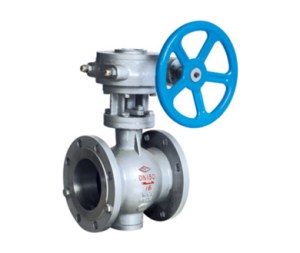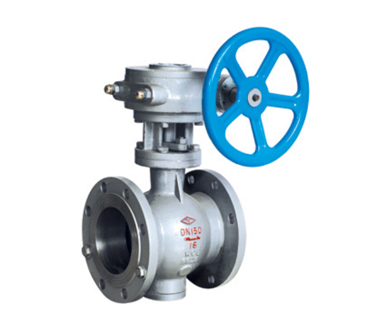BALL VALVES
As one of pneumatic ball valve suppliers , MstnLand provides high performance ball valve products, including Trunnion mounted ball valve, Floating ball valve, Welded structure ball valve, Top entry ball valve, Wafer ball valve, Butt treaded socket welding ball valve and Three way ball valve.
The pneumatic ball is characterized by low flow resistance, reliable sealing, fast opening and closing and long service life, has been widely used for various critical engineering and manufacturing applications. A ball valve should be installed horizontally in the pipeline to cut off, distribution and change the flow direction of the medium, it just only needs to rotate 90 degrees of operation and small torque can be closed tightly.
Types of Ball Valves Based on Material
When buying ball valve, it is significant to compare the different materials that are used to manufacture ball valves. The selection of the material used in the ball valve depends largely on the service condition of the valve. Body materials of MstnLand ball valves include, but are not limited to stainless steel, wcb, carbon steel, forged and cryogenic.
Types of Ball Valves Based on Structure
Driven by the stem, the ball valve revolves around its axis. According to the structural form, ball valve can be divided into Floating ball valves, trunnion mounted ball valve, top entry ball valve, metal seated ball valve, full weld ball valve and industrial ball valve.
BALL VALVES
MstnLand provides high performance ball valve products, including Trunnion mounted ball valve, Floating ball valve, Welded structure ball valve, Top entry ball valve, Wafer ball valve, Butt treaded socket welding ball valve and Three way ball valve.
The ball valve is characterized by low flow resistance, reliable sealing, fast opening and closing and long service life, has been widely used for various critical engineering and manufacturing applications. A ball valve should be installed horizontally in the pipeline to cut off, distribution and change the flow direction of the medium, it just only needs to rotate 90 degrees of operation and small torque can be closed tightly.
Types of Different Valves Based on Material
When buying ball valve, it is significant to compare the different materials that are used to manufacture ball valves. The selection of the material used in the ball valve depends largely on the service condition of the valve. Body materials of MstnLand ball valves include, but are not limited to stainless steel, wcb, carbon steel, forged and cryogenic.
Cast Iron Ball ValvesCast Iron Ball Valves
Cast Iron Ball Valves
Cast Steel Ball ValvesCast Steel Ball Valves
Cast Steel Ball Valves
Stainless Steel Ball ValvesStainless Steel Ball Valves
Stainless Steel Ball Valves
Stainless steel ball valve can be closed tightly with only a 90-degree rotation and a small torque. The completely equal valve body cavity provides a low resistance, straight-through flow path for the...
Brass Ball ValvesBrass Ball Valves
Brass Ball Valves
Fully Welded Ball ValvesFully Welded Ball Valves
Fully Welded Ball Valves
High Pressure Ball ValvesHigh Pressure Ball Valves
High Pressure Ball Valves
Ceramic Core Ball ValvesCeramic Core Ball Valves
Ceramic Core Ball Valves
Types of Ball Valves Based on Structure
Driven by the stem, the ball valve revolves around its axis. According to the structural form, ball valve can be divided into Floating ball valves, trunnion mounted ball valve, top entry ball valve, metal seated ball valve, full weld ball valve and industrial ball valve.
What Is A Ball Valve Used For?
A ball valve is a type of valve that uses a hollow, pivoting ball to control the flow of a medium through itself. If the hole of the ball is in line with the flow, the valve is open, and it is closed when the valve handle has been used to pivot the ball ninety degrees. The main function of a ball valve is to isolate parts of a plumbed system by starting, stopping, or adjusting the flow of a medium (usually water, air, or gas) between separate chambers, ducts, and . This is achieved by either allowing the medium to pass freely through the ball valve, partially admitting the medium through a narrowed opening, or blocking the flow completely. A ball valve can also be used to divert flow into different directions, depending on the valve type and handle position. Ball valves offer operational simplicity, a quick repair,and a high level of versatility. This means that they are extensively used in industrial applications and able to support pressures up to 1,000 bar (100 MPa, or 15,000 psi) and temperatures up to 400°C (752°F), depending on the material, medium, and design used.
Ball Valve Application
Ball valves are most commonly found in plumbing systems and related applications such as industrial cooling. Their role is generally to help manage the flow rate of liquid or gas passing through a specific port or opening, influencing the balance of pressure in other key parts of the system.
They are also familiar features in various types of tap, faucet, and spigot, as well as being widely used on gas lines, domestic appliances, and additional industrial applications. In most cases, ball valves for industrial use tend to be more heavy-duty and robust in construction than their domestic counterparts. They are typically found in applications where machines or systems operate under significantly higher pressures and temperatures, within industries as diverse as manufacturing, assembly and production, plastics and metals, chemical, medical, industrial power, food and beverages, printing and textiles, electronics, automotive, and logistics.
What is the Difference between Ball Valve and Globe Valve?
The main difference between theglobe valve and the ball valve is the way they open and close the flow. A globe valve is used to control and throttle the flow while with a ball valve you can't control the flow and the only thing you can do with the flow is to close it. With a globe valve you are able to regulate the flow whereas the ball valves are well-performed for closing the flow without any pressure drops.
Another difference is that a ball valve has a stem and a ball that rotates horizontally but a globe valve has a stem and a plug that moves vertically. If you need to keep the flow closed for a long period of time, use a ball valve. A ball valve works more efficiently in high-pressure systems like fire hoses. If the regulation of flow is the matter, it's better to use a globe valve. Cooling systems, fuel and steam systems are some applications of globe valves of which the flow needs to be under strict control. Unlike globe valves, there is no restrictions of installation for ball valves. Besides, ball valves are lightweight in comparison with globe valves. Other differences are that ball valves are more durable, work well after so many cycles and are more reliable even after a very long term of misusing.Ball valves possess a small obstruction of their fluid and they are less noisy while the globe valves share a large obstruction of their fluid and may become a little bit noisy after being used for many years.
If you want to know more about pneumatic ball valve price, please contact us.
If you wan to buy waste water valve, please leave us a message.
Location : Room A086, No.2 Bonded Port Area, Xinyingwan District, Yangpu Economic Development Zone, Hainan Province, 578001 Hainan ,
Contact : mstn land, +86 0898 28831101








